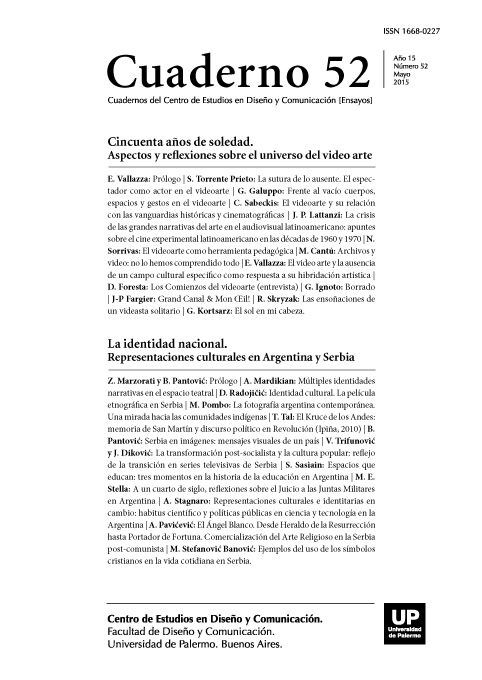Serbia en imágenes: mensajes visuales de un país
Abstract
The ubiquity of the image in everyday life leads us to witness a mighty revival
of the culture of the image. The image of different countries -through potential culture
of their territories and reputations of their respective nations- ranks as one of the main
presentation cards in the international arena. This article focuses on “product design”, in
relation to the Serbian national image. We have based our research on two cases of graphic
design that took place in Belgrade, the Serbian capital. The first is the winning image of
the card design contest VISA in 2005, and the second is a giant poster of 2010 located at
the Nikola Tesla International Airport. The two designs are developed to enhance international competitiveness and both represented the national Serbian heritage. But, however,
the objectives to achieve were not the same. One has been produced for an international
private company and the other was drawn by an official institution.
Given these different objectives that achieves the image, we propose to conduct a semiotic
analysis of the two advertising cases. We will try to figure out what the designed images are
telling us. From this point on we can perhaps understand the meanings of the messages
that show and hide and what are the suggested actions.
References
Anholt, S. (2007). Competitive identity, the new brand management for nations, cities and regions. London: Palgrave Macmillan.
Barthes, R. (1972). Retorica de la imagen en La semiología. Comunicaciones Nº 4. Buenos Aires: Tiempo Contemporáneo .
The Rhetoric of the Image. Recuperado el 06 de 2012 de http://98.131.80.43/home/wpcontent/uploads/2011/06/barthes_rhetoricofimage.pdf
Benedict, R. (1968 ). Comunicación y cultura. Buenos Aires: Eudeba.
Foster, H. (2006). Dizajn i zločin - i druge polemike. Zagreb: VBZ.
Kotler, P.; Haider, D. y Rein, I. (1993). Marketing Places: Attracting Investment, Industry, and Tourism to Cities, States, and Nations. New York: The free press.
Lotman, Y. M. (1982). Estructura del texto artístico. Madrid: Istmo.
Morace, F. (1990). Una nuova cultura del consumo. Milano: Domus Academy.
Nye, J. S. (2004). Soft Power: The Means to Success in World Politics. New York: Public Affairs Press.
Peirce, C. S. (1992). The essential Peirce: selected philosophical writings. Vol. 1 (ed. Nathan Houser, Christian J. W. Kloesel). Bloomington: Indiana University Press.
Sazbón, J. (1978). Saussure y los fundamentos de la lingüistica. Estudio preliminar y selección de textos. Buenos Aires: Ceal.
Skinner, S. J. (1990). Marketing. Boston: Houghton Miffling Company.
Taylor, A. E. (1936). Elements of metaphysics. London: Methuen.
Los autores/as que publiquen en esta revista ceden los derechos de autor y de publicación a "Cuadernos del Centro de Estudios de Diseño y Comunicación", Aceptando el registro de su trabajo bajo una licencia de atribución de Creative Commons, que permite a terceros utilizar lo publicado siempre que de el crédito pertinente a los autores y a esta revista.


